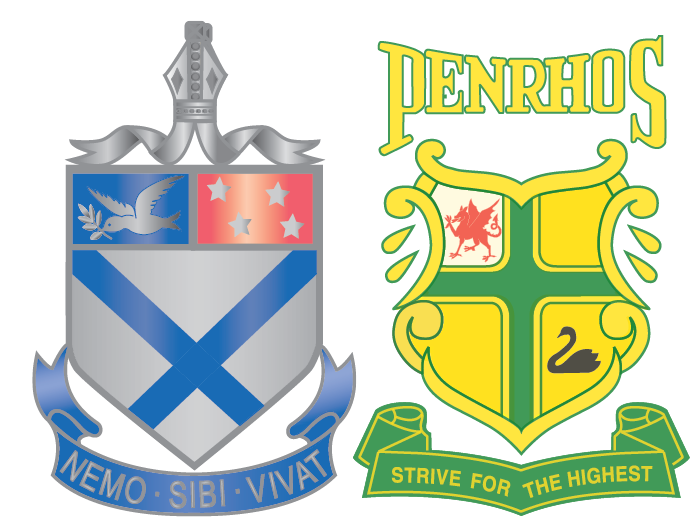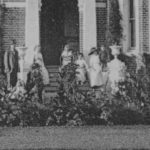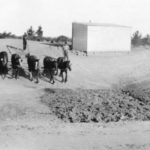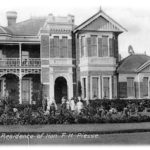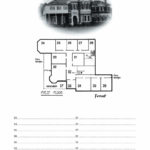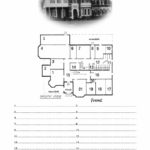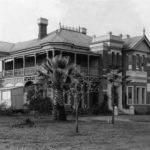Kobeelya School Hymn
O Wonderful and Loving Lord,
Who madest all things by Thy Word,
We will praise Thee, We will praise Thee.
O, Father, Son, and Holy Ghost,
‘Mid all the angelic Heavenly Ghost,
We adore Thee, We adore Thee.
Alleluya, Alleluya, Alleluya.
In all we do at work or play,
Throughout each busy happy day,
We will serve Thee, We will serve Thee.
In sacrament and prayer and praise,
Our hearts to heaven we will raise,
We will seek Thee, we will seek Thee.
Alleluya, Alleluya, Alleluya.
What,er may come in after years,
Of joys or sorrows, hope or fears,
We will trust thee, we will trust thee.
If Thou should’st call to work for Thee.
In this our land or oversea,
We will follow, we will follow.
Alleluya, Alleluya, Alleluya.
If tempting thoughts our hearts entice,
To let this present world suffice,
We will love Thee, We will love Thee,
Through all our days our song shall be,
In loving worship raised to thee,
Alleluya, Alleluya, Alleluya.
Words as composed by Archdeacon Burbidge
The History of Kobeelya Church of England Girls School
The history is also available in eBook format here.
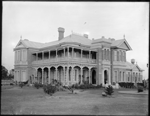
Hon. F. H. Piesse
No history of Kobeelya would be complete without reference to the Honourable Frederick Henry Piesse. As a prominent early settler and successful merchant, Piesse was influential in much of the early development of Katanning.
Mr Piesse built the Roller Flour Mill in 1891, which resulted in the expansion and success of the region, as farmers were encouraged to grow wheat. The Mill, now a National Trust listed building, houses the Katanning Tourist Bureau.
The construction of St. Andrew’s Church was made possible through a donation of bricks from the Piesse brickworks. Mrs Piesse opened the church in 1898.
In 1902 Piesse built the imposing, two storey, Victorian style mansion as his family’s residence and called it Kobeelya, an Aboriginal word meaning ‘place of rest and sleep’. Upon his death, Kobeelya was offered for sale to Dr. Cecil Wilson, Bishop of Bunbury, for use as a school.
The Piesse family home with 17 bedrooms became the school’s main dormitory and later became known as Burbidge House in honour of Mrs M. E. Burbidge.
Mr Piesse was well remembered at Kobeelya, as many former students will attest to feeling his presence in Burbidge House.
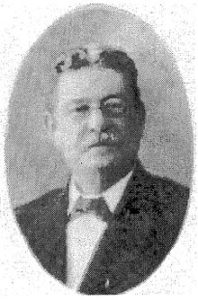
In 1917, Mrs Mary Eleanor Burbidge, wife of the local Anglican rector, started a school with her daughter and several children from the local area. The ‘Brownies’ School as it became known, was officially registered in 1919, and as numbers increased the school moved from the family dining table to the St. Andrew’s Parish Hall. By 1921 numbers had swelled to twenty-one, with most of the pupils boarding at the rectory.
When Kobeelya was offered for sale, the Anglican Bishop of Bunbury called on local townspeople to float a company and the property was purchased for five thousand pounds. Mrs Burbidge and her ‘Brownies’ transferred to Kobeelya. The Archbishop of Perth, the Most Reverend C. O. L. Riley, officially opened the school on the 14th September 1922.
Originally known as the Katanning Church of England Girls’ School, the name changed to Kobeelya Church of England Girls’ School in 1951 when a new company was formed to rescue the school from financial difficulty.
Although mainly a boarding school for girls, a number of boys did attend the Kindergarten classes in the early years and again during WWII. Boys were once again enrolled at Kobeelya during the Penrhos era as ‘day boys’.
Students came predominately from the nearby farming areas as well as Perth and the north of the State. A small but steady stream of girls from Singapore, Malaysia and other overseas countries also received their schooling at Kobeelya.
The school’s educational philosophy was that emphasis be placed on achieving a balance between academic, cultural and physical activities so that each student could gain a sense of satisfaction and personal achievement, regardless of academic prowess. Students were encouraged to participate in the many extra-curricular activities offered by the school.
The school motto – NEMO SIBI VIVAT – translates to ‘No man lives for himself’ and is well reflected with eight former students being recipients of the Order of Australia Medal.
Horse riding was a unique feature of Kobeelya and in its heyday there were as many as 40 horses stabled at the school. It was the only school in Western Australia to boast a registered Pony Club and girls regularly competed at local shows, gymkhanas and the Prince Phillip Mounted Games. During the Penrhos era under the guidance of School Principal Val Mayger, herself an accomplished horsewoman, students were able to study a TAFE accredited course in Equine Management.
Kobeelya was a small school with eighty to one hundred boarders. Student numbers often reflecting the fortunes of Western Australian agriculture and throughout its history there were talks of closure. In 1975, owing to the school’s continuing financial difficulties, the Church of England withdrew its support and Kobeelya Church of England Girls’ School announced its closure.
The following year Kobeelya reopened under the direction of Penrhos and the Uniting Church. The school entered a new phase of its history as Kobeelya College Incorporated. The familiar brown and gold uniforms replaced by green and gold.
Unfortunately, many years of financial hardship, combined with a rural recession, brought about the end of an era when in June 1986, the school bell was rung for the last time and Kobeelya sadly closed its doors.
Kobeelya is now run by the Katanning Baptist Church and operates as the Kobeelya Conference Centre.
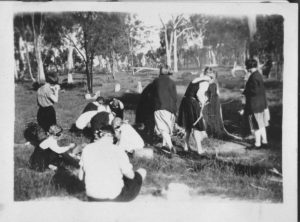
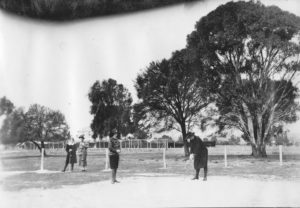
School Principals
Mrs M. E. Burbidge, MA (Hons) Cantab 1917-1921 The Rectory,
1922-1929 Kobeelya
Miss G. Gordon Everett, MA (NZ) 1930
Mrs E. E. Whitaker, BA (Hons) Lond. 1931-Mid 1933
Mrs H. M. Strugnell, MA 1933-1946
Miss N. B. R. Russell, MBE, BA, Dip Ed, LAB, LTCL, AMusA 1947-1953
Miss J. S. Thewlis, BSc (Lond), Dip Ed. 1954-1956
Miss D. M. May, BA, Dip Ed (Adel) 1957-1964
Miss E. C. Riley, B Ed, Dip Phys Ed 1965
Mr T. G. Blom, BA, Dip NHI (Holland), MACE, AASA Prov 1966-1969
Mr V. R. Cooper, B Sc, Dip Ed, B Ed 1970-1976
Mr J. Bailey, B Ed (Hons), STC (UK) 1976-1977
Miss V. Mayger, TC, AMusA 1978-1986
A “Piesse” of History
“KOBEELYA”
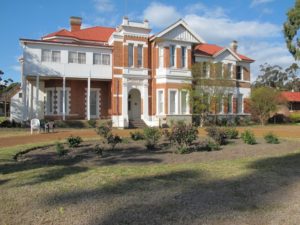
The House
Kobeelya” the grand Italianate Mansion at the top of Clive Street (now referred to as Kobeelya Avenue) was built in 1902 for the Hon Frederick Henry Piesse, his wife Mary (nee Chipper) and their children Frederick, Cecil, Harold, Melville and Florence. The name, suggested by Sir John Forrest, is an aboriginal word meaning “place of sleep and rest”. It has been described as being built on a hill overlooking acres of orchard and vineyards to the west and north, and the tiny township of Katanning below.
The architect assigned to design the building was Mr G Summerhayes of Perth, WA and the decorator was Mr Tassell (whose granddaughter, Marj McKie attended Kobeelya in 1951 and 52). The builder/contractor was JH Brown. The house originally had seventeen rooms, bathrooms with hot and cold running water, in-door toilets (septic), seven bedrooms and billiard and ball rooms. A second story was added to the southeast side of the building at a later date, as well as the enclosure of the balcony as it is today.
The house was constructed with brick walls, painted corrugated iron roof and timber joinery. The bricks were made at the Piesse brickyards. The house is typical of the period with gabled roof, wide verandahs, many chimneys, bay windows, stained glass windows and side panels, ornate plaster work and polished jarrah floors. The Piesse family crest is featured in the arched stained glass window on the main staircase landing along with the initials FHP. Kobeelya was also connected to electricity, Katanning having the first electricity plant in WA.
The furniture was ordered from England but failed to arrive as the ship was ship-wrecked. When the second collection arrived there was great rejoicing in the family as they had ‘made do’ with a various assortment from round about.
Kobeelya was the first significant residence in the town of Katanning and one of the most up-to-date in the state. It had high social value having been built for the Piesse family, an important pioneering family in the Great Southern, who were instrumental in the development of Katanning and the State of WA through Frederick Piesse’s Parliamentary work. In its heyday the house entertained and accommodated many important people and was a prominent landmark.
In January 1915 a large portion of the Kobeelya Estate was subdivided into building blocks which were quickly purchased.
Kobeelya passed out of the Piesse family in 1922 when it was bought by the Bunbury Diocese of the Anglican Church for £5,000. The interior furnishings were sold and the building became the boarding house and schoolrooms of Kobeelya College which opened on 14th September 1922.
The chapel was erected on the eastern side in 1939.
In 1986 the Baptist Church purchased the site for use as a weekend retreat and education/conference facility.
The following article, from the Great Southern Herald1.Saturday, November 15, 1902 is an interesting description of the house Kobeelya girls know as “Burbidge House”:
“KOBEELYA” The residence of Mr F.H.Piesse
“Kobeelya,” the native term for rest, is situated on the crown of the hill at the foot of Clive Street East, which overlooks 180 acres of orchard property, and is the new residence of the Hon F.H. Piesse, MLA for this district. It is introduced from the street by a winding, graveled path, and on each side are planted rows of fruit and ornamental trees, which are just now in full bud. Fronting the building at its northerly and westerly aspects are several walks which are neatly set off by beds of ornamental flowers and shrubs, and at the eastern end are tennis and croquet lawns, which are just now being set off with a couch grass which is doing well.
The building, a two-storey one, is of brick and cement facings, and contains 17 rooms, besides kitchens, pantries etc. The entrance inside is made through a portico, which is tiled after the tessellated style, into the main hall, where the most striking feature is the jarrah staircase. This work was specially executed by Messrs Coombe, Wood and Co. for the contractor Mr J.H. Brown and is a beautiful piece of workmanship. Leading from the left of the hall is the drawing-room, which is lit by six brass scroll brackets, and a three-light electroleer in the centre. A special feature of this room is a cosy corner formed by the bay-shaped windows and divided from the room by an arch. This room reflects much credit on the decorators. Passing to the right of the hall is the study of Mr F.H. Piesse. This room is nicely finished off, being fitted with the usual library appointments. Entering a jarrah and stained glass door we arrive in the billiard room, which is fitted with a Cox and Yeamam champion billiard table. This room is finished off with a Dado Linncruster, the ceiling being of stamped metal. The dining-room is situated at the eastern end of the hall, which is divided from the morning room by folding doors, which, when thrown open make a spacious ball-room. These rooms are specialty fitted up with electroleers, and several scroll brackets. On the half landing of the staircase is a very prettily designed stained glass window, a running brook, festive with birds of high coloured plumage, being thereon depicted. At the top of the staircase, on the main landing, is to be found the bedrooms and conveniences of the family. These number seven, and are nicely furnished and finished off with the latest electrical appliances. The bathrooms, two in number, are fitted up with hot and cold water, and are supplied by an overhead corrugated iron tank of 1,500 gallon dimensions.
Before leaving the balcony we were struck with the beautiful and uninterrupted view which we obtained of the surrounding country. Ample accommodation is provided in the quarters set apart for the servants on the ground floor, these like the other rooms, being set out with the latest fittings. The kitchen which is fitted up with the latest improved stove and hot water arrangements has a China closet on one side and a goods pantry on the other, they being most conveniently placed. Underneath the kitchen is a cellar, 14ft. by 18ft., which is also fitted with handy receptacles. The outhouses comprise a well fitted laundry and wood-house. There is stabling accommodation provided for four horses, connected there with being the necessary provision for attendants, etc. Ample provision has been made for a water supply. An underground tank contains a storage of 47,000 gallons, which is pumped to the distributing tank by a windmill. A well, from which the water is being pumped at a depth of 108 ft., has turned out remarkably good prospects, the water being perfectly safe to use for drinking purposes. A corrugated iron tank, with a capacity of 10,000 gallons, is erected on a Karri stand at an altitude of 18ft. and contains the water supplied by this well, the same being used for gardening purposes, etc.
The architect for the building is Mr G Summerhayes, of Perth. The contractor, Mr J.H. Brown, of this town, is to be credited with carrying out a work which it will not be, his, good fortune to have viewed by a large populace, but which, nevertheless, by those who do see it, will be appreciated. The decorations were carried out by Messrs. Tassell Bros., of Albany.
It is the intention of Mr Piesse to shortly adopt the latest sanitary methods in vogue, which we believe, will be that known as the “septic” tank system.
FH Piesse CMG, JP
Frederick Henry Piesse was born in Northam on 6 December 1853, the eldest of eight sons born to William Roper Piesse who had arrived at the Colony in 1841. William Roper Piesse was related to the London house of Piesse and Lubin and was first involved in pastoral activity, then government service, retiring in 1893. He died in 1894. The London house of Piesse was also involved in a very successful perfumery in London and France.
FH Piesse was educated at Northam and Guildford state schools. After leaving school he joined Throssell, Son and Stewart in Toodyay and at the age of 18 was manager of the Toodyay branch. In 1872 he travelled to Shark Bay with his brother and two other men one being Mr Earnest von Bibra to embark on a pearl-fishing venture. Whilst they did fairly well in this venture, they lost their few pearls through the post. This necessitated the men having to walk back to Perth and it is understood that they were the first white men to walk across country from Shark Bay to Perth.
Following this venture Frederick Piesse took up the position of Post Master at Williams River, which was an important centre on the Royal Mail line between Albany and Perth. He was a man of undoubted energy and during this period he continued his studies and took up the position of bookkeeper for the late Mr Cornwall, one of the foundation store keepers of the Great Southern. He also taught at night school and it is understood that Mr Chub Krakouer and the two Batt Bros of Wandering, all say they received their education at his hands.
Shortly after arriving at Williams, Frederick Piesse met Miss Mary Jane Chipper, who was in charge of the Kojonup Post Office. Mary Jane became Mrs FH Piesse and his lifelong help mate, freely entering into his political work and assisting him in every possible way, both in the home and business. Their first place of residence was the first Post Office at Williams, now the Police Station. Their second residence was the old store in Williams. When they arrived in Katanning they lived in the old bungalow opposite the Church of England (which was considered to be one of the finest mansions in WA). 1902 saw them move to Kobeelya where Frederick Piesse resided until his death on 29 June 1912. Mary Jane lived the remaining years of her life at “Kulal” which was built by one of her sons (Frederick).
In 1884, Frederick Piesse was joined by his brother Mr Charles A Piesse and they founded the firm of F & C Piesse with stores at both Williams and Arthur River. When the Great Southern Railway was in the course of construction, branches were founded at Narrogin, Wagin and Katanning. They dealt in all manner of merchandise, kangaroo skins and general business as well as being the largest sandalwood buyer in Western Australia. He founded the Katanning branch of F & C Piesse in 1888. At a later date, Mr RL Richardson joined FH Piesse as a partner in this business and many Kobeelya girls will remember Richardson & Co Ltd which became the name of the business in later years.
On 4 May 1891 the Katanning Flour Mill was declared opened by the Hon John Arthur Wright of Albany, the then manager of the Great Southern Railway Co.
On the inauguration of responsible government in Western Australia, Frederick Piesse entered the Legislative Assembly representing an electorate that covered part of Beverley, Pingelly, Narrogin, Wagin and Katanning. At this time CA Piesse was also elected to the Legislative Assembly. FH Piesse occupied a seat in Parliament for over 21 years and was a member of the Forrest Government, for four and a half years. He was Deputy Premier of Western Australia in 1902. In 1908 Frederick Piesse was appointed a Companion of the Order of St Michael and St George (CMG), which is used to honour individuals who have rendered important services in relation to Commonwealth or foreign nations.
It has been said that FH Piesse was a man of undoubted energy and vision. There can be no doubt of this. He founded the flour mill, wine cellars and an aerated water factory and sank a well which supplied Katanning residents with a water supply. The Roller Flour Mill generated electricity to the whole town, resulting in Katanning being the first place in Western Australia to have street lighting. Along with the running of these businesses and farming ventures he regularly attended Parliament, leaving Katanning on a Monday night and returning on the Friday. In those days the train service took up to 2 days to get to Perth and passengers travelling by train would sleep the night at Beverley. FH Piesse was one of nature’s gentlemen and was loved and respected by all from the lowliest in the land to the highest. The peoples’ worries in the district were his worries and he was always willing to give good advice to all who asked. His ability as an administrator was undoubted and during his time of office in the Forrest Government he carried out the duties of a Commissioner of Railways and Director of Public Works. At this time the Coolgardie water scheme was completed, the Bridgetown Railway built and the Coolgardie/Kalgoorlie Goldfields lines were completed. A few of his private ventures have been mentioned above; however, the list goes on. Still standing today as a reminder of the many Piesse ventures are the flour mill in the centre of town and battlemented brick distillery of the Piesse vineyard on the outskirts of the town.
It was shortly after his resignation from the Forrest Government that he built “Kobeelya”.
After the death of FH Piesse, Lord Forrest said the following to his son Harold:
“He was a great man Harold, was a most reliable business man of experience in my Cabinet and he had no equal in Parliament from a moral point of view. West Australia really did not know this value on account of his retiring nature and he was one of my best friends and soundest advisers in the Federal Cabinet.”
NB. We would like to point out that it was Sir John Forrest who was in Federal Cabinet and not FH Piesse, who was a member of the Western Australian Government only.
One of the proudest moments for the family of FH Piesse was the unveiling of the monument that today stands in front of the railway station in memory of a man who did great things for development of the district he loved and represented.
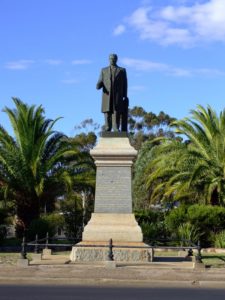
Visitors to “a place of rest”
The first visitor to Kobeelya was Dr House, a well known and beloved man who had much to do with the district’s early history.
Lord Forrest was a frequent visitor. Like most of the visitors, he slept in the room on the South side of the house, turning left at the top of the stairs.
When the family was happily settled Thomas Chipper (1829) came to live there. Thomas was Mrs Piesse’s father. Thomas’ father, John arrived in the first year of the colony and Thomas was born in Bassendean. Historical records state that he was the first male child born in the state, but it was afterwards found that the son of a soldier of the first regiment had that honour. Thomas died in the second room on the left of the entrance.
Mrs Daisy Bates famed for her work among the aboriginals came at the weekends to stay when she was camped at the Police Pools, three miles from the town. She was picked up on these occasions by Mr Piesse’s carriage for the journey to and from the Police Pools.
Sir Arthur Lawley was appointed WA Governor at the age of 41 in 1901 and he visited Kobeelya twice during his time in WA. Mt Lawley is named after this governor. The following governors also visited: Lord Northcote, 3rd Governor General of Australia; Admiral Sir Frederick Bedford, Governor of Western Australia from 1903 to 1909; Sir Gerald Strickland who became governor of Western Australia in May 1909; Major General Barron (Sir Harry) governor of Western Australia from 1913 until February 1917; Sir William Ellison Macartney Governor of Western Australia from 1917 to 1920; Sir George Reid, Prime Minister 1904-5; Sir James Mitchell when he was Mr Mitchell the Minister for Lands and Agriculture (1909); Sir Edward Stone, Chief Justice; Sir Edward Wittenoom (whose father was the first clergyman of the Swan River Settlement). Sir Winthrop Hackett was also a visitor at Kobeelya.
Other members of Sir John Forrest’s government to visit were CY O’Connor, Hon Harry Venn, Hon. Charles Harper and the Hon AG Hassell.
Summary
We believe it is fitting to end this account of Kobeelya and FH Piesse with the following excerpt from Merle Bignell’s book “A Place to Meet”2:
“On Thursday 14 September 1922 the Kobeelya Girls’ School was officially declared open, the dedication service being conducted by the Archbishop of Perth, C.O.L. Riley, who recalled previous visits to the town and said:
He had known the late Hon. F.H. Piesse for many years and had held him in great regard and could think of no better way to perpetuate his memory than by keeping his old home as a school for the girls of the district for which he had done so much.”
FH Piesse, although only having a limited education knew the benefits of a good education and Christian values. He encouraged his children to achieve the best education they could and to pursue their chosen careers.
Descendants of FH who attended Kobeelya CEGS
The first descendant of FH Piesse to attend Kobeelya as a student was his granddaughter Verney (known as Betty), daughter of Harold (FH’s third son) and Elizabeth (known as Bessie) Piesse. Betty was an original “Brownie” selected to be a playmate for little Nancy Burbidge.
Great niece Ayleen Piesse, granddaughter of Charles Austin and Flora Piesse attended during the 1920’s.
Mollie Dawson Longmire attended Kobeelya around 1926-8 and by her marriage to Edmund Stephen Roper Piesse (CA Piesse’s son) in 1937 she became a niece in-law.
Great great niece Pamela Piesse, adopted daughter of Claude and Margaret Piesse, attended Kobeelya from 1929 (unsure of how many years). Claude was a grandson of Charles Austin Piesse.
Great niece Elizabeth Margaret (Margi) Piesse, daughter of Mollie and Edmund Piesse attended 1950-56.
Great grand-daughter Marie Fritz (Piesse), daughter of Francis and Kathleen Piesse attended 1958-62. Francis was Harold and Bessie’s son and brother to Betty.
Great grand-daughter Jenifer Steedman (Garside), daughter of Gwendolyn and Raymond Garside attended 1962-3. Gwendolyn was the daughter of Cecil (FH’s second son) and Florence Piesse.
Lucille Radford attended Kobeelya 1963-5 and by her marriage to Brian Piesse she became a great grand-daughter-in-law. Brian is the elder son of Francis and Kathleen and brother to Marie and Jan.
Great grand-daughter Janet Cooper (Piesse), daughter of Francis and Kathleen and sister to Marie attended 1974-75.
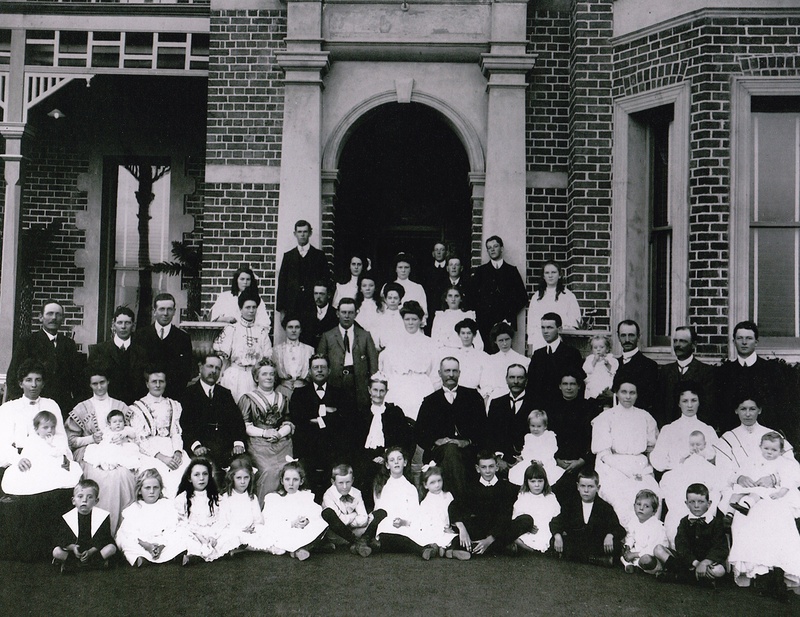
Harold V Piesse, Memories of the Late Hon. F.H. Piesse MLA CMG dated 11 April 1939
Western Ancestor – June 1987
